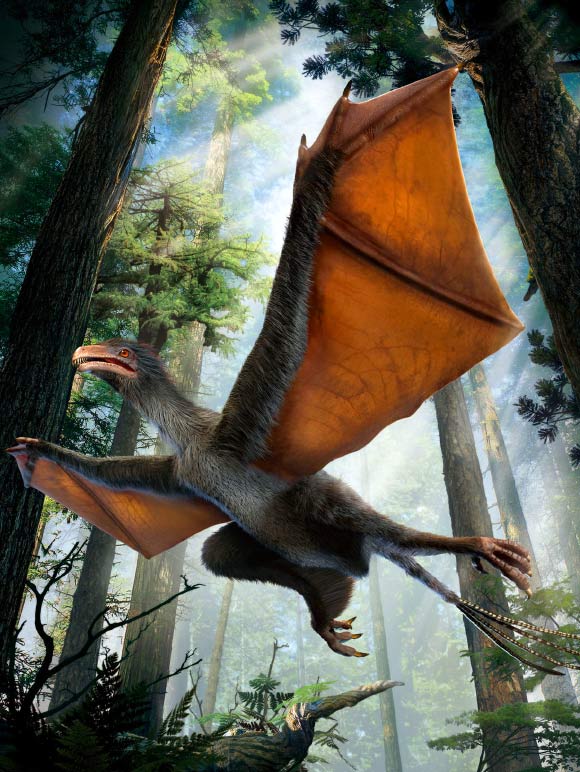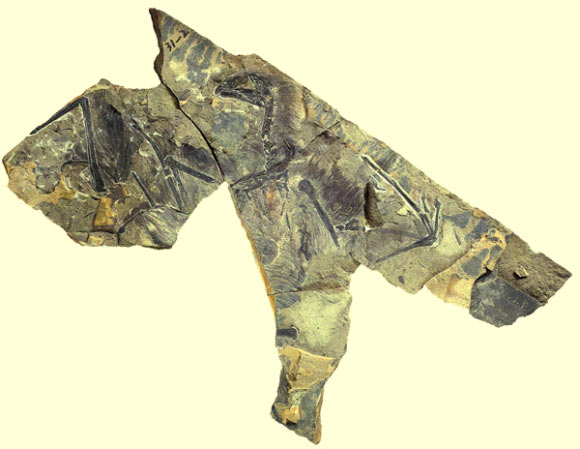A team of paleontologists, co-led by Dr Xing Xu and Dr Xiaoting Zheng of the Linyi University’s Institute of Geology and Paleontology, has discovered a bizarre new theropod dinosaur that lived in what is now China during the Middle-Upper Jurassic period, approximately 160 million years ago.
The prehistoric creature, scientifically named Yi qi, represents a new genus and species. It belongs to Scansoriopterygidae, an extinct family of maniraptorans theropod dinosaurs closely related to birdsThe genus and species names are derived from Mandarin Chinese Yi (wing) and qi (strange), respectively, referring to the bizarre wings of this animal. The intended pronunciation of the name is roughly ‘ee chee.’Yi qi had a stubby head, featherless wings (like in bats), long fingers and threadlike feather, which is quite different from the feather of any existing bird.
“Analysis of Yi qi’s flying ability shows it was capable of flying short distance between trees, or flying from tree tops to the ground,” said Dr Xu, who is the lead author of the paper published in the journal Nature.
“Living in the mid-period of Jurassic, Yi qi could be a pioneer in the evolution of flying ability,” added Dr Xiaoting, who is the second author on the paper.
“Yi qi proves that the prehistoric life had various attempts in developing flying ability, many went into the dead ends, though the flying mode of existing birds seems to be the only one survived to date.”
The most striking feature of the dinosaur is the presence of an anomalous, slightly curved, distally tapered, rod-like bone, which is morphologically unlike any normal theropod skeletal element.
“Indeed, no equivalent of the rod-like bone is known in any other dinosaur even outside Theropoda, but similar structures are present in a diverse array of extant and extinct flying or gliding tetrapods like bats.”
A partial skeleton of Yi qi was recovered from the Tiaojishan Formation of Hebei Province, China
“The specimen was collected by a local farmer, but its provenance and authenticity have been confirmed by multiple lines of evidence including sedimentology, taphonomy and computed tomography data,” the scientists wrote.
Ref:Article By Editors,Scinews.com
Key:WFS,Riffin T Sajeev,Russel T Sajeev,World Fossil Society



 December 26th, 2015
December 26th, 2015  Riffin
Riffin 

 Posted in
Posted in  Tags:
Tags: 